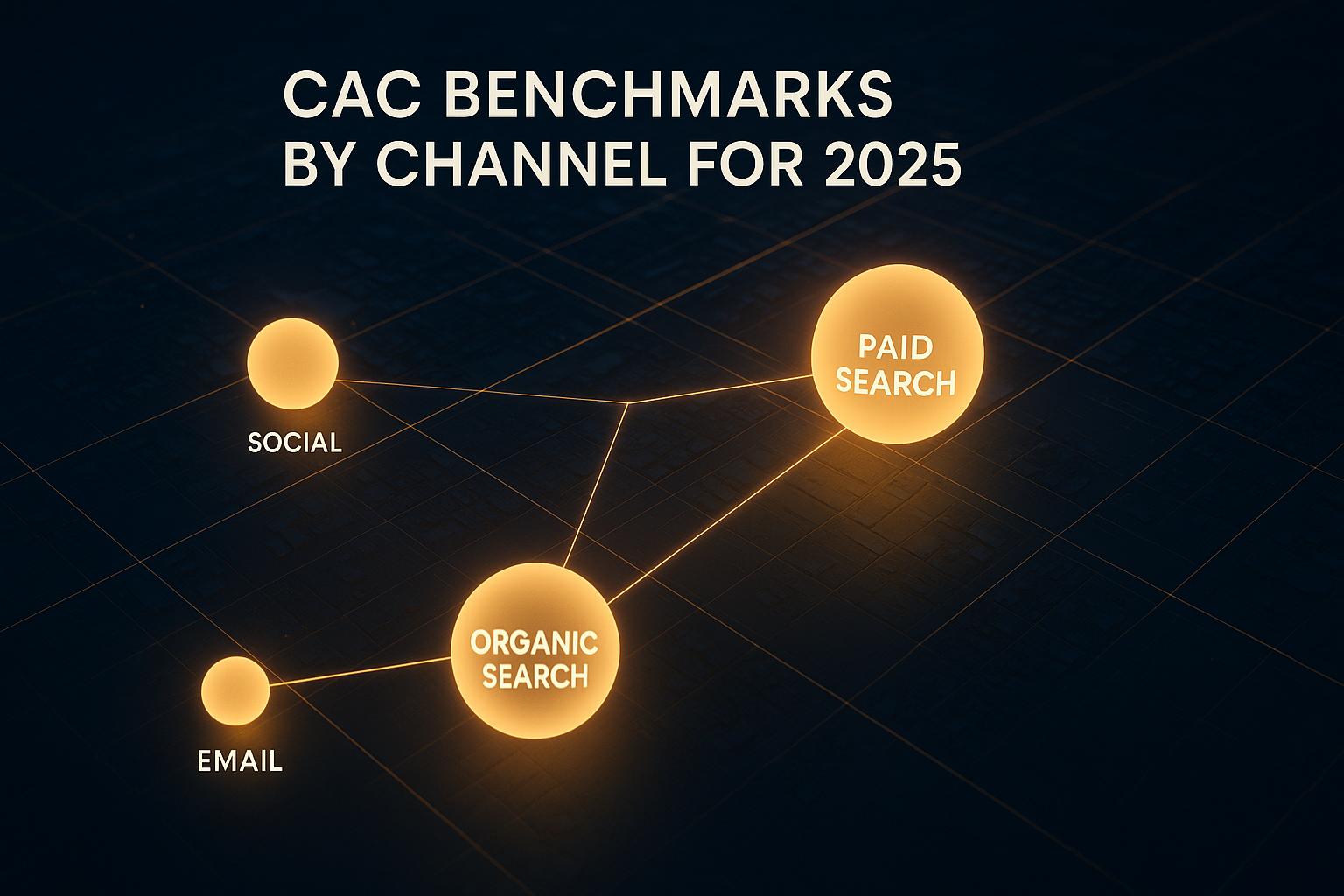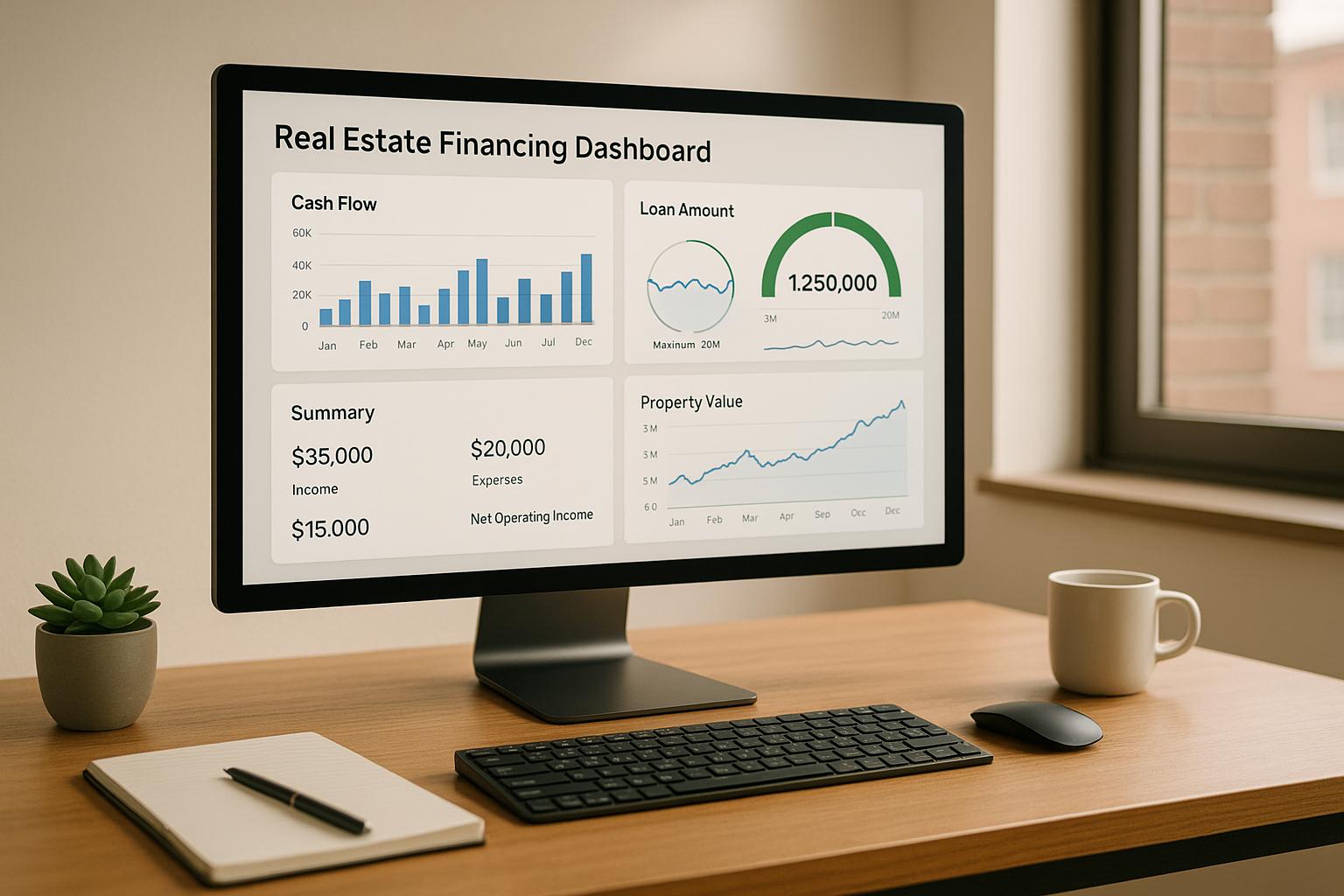DPI Ratio in Venture Capital Explained

DPI (Distributions to Paid-In) is a key metric in venture capital that measures the cash or stock returned to investors compared to the capital they invested. It's straightforward: DPI = Cumulative Distributions ÷ Paid-In Capital. For example, if a fund distributes $180 million after $85 million was invested, the DPI is 2.12x, meaning investors received $2.12 for every $1.00 invested.
Why DPI Matters:
- For Investors (LPs): It shows actual cash returns, helping assess fund performance and liquidity.
- For Fund Managers (GPs): A strong DPI demonstrates a track record of delivering real returns, aiding in fundraising and exit planning.
Key Highlights:
- DPI vs. TVPI: DPI reflects realized returns (cash), while TVPI includes unrealized portfolio value.
- DPI vs. IRR: DPI focuses on total cash returned, while IRR measures the annualized efficiency of those returns.
- Gross vs. Net DPI: Gross excludes fees; Net accounts for fees and reflects what investors actually receive.
Benchmarks:
- A DPI of 1.0x means break-even (capital fully returned).
- Top-performing funds often achieve 2.0x or higher.
- DPI growth depends on fund age and sector, with early-stage funds showing lower DPI due to longer exit timelines.
By focusing on realized returns, DPI provides a clear, reliable measure of fund performance, especially during volatile markets. Pair it with TVPI and IRR for a complete view of a fund’s success.
How to Calculate DPI
DPI Formula and Components
Calculating DPI is relatively straightforward. The formula is: DPI = Cumulative Distributions ÷ Paid-In Capital. This calculation reveals how much cash investors have received compared to what they’ve contributed to the fund.
- Cumulative distributions represent the total cash returned to limited partners (LPs) from realized exits, dividends, or other liquid distributions. This includes proceeds from mergers and acquisitions, IPOs, dividend payments, and interest income. Importantly, only actual cash distributions count - paper gains are excluded.
- Paid-in capital is the total amount of money that LPs have actually contributed to the fund. This refers to the capital that has been "called" by the general partner and paid by investors, not the total amount they committed to invest.
Understanding the distinction between committed and paid-in capital is essential. Many funds operate on a capital call system, where the general partner requests money from investors as needed for investments. If the capital hasn’t been called and paid, it doesn’t factor into the DPI calculation.
Gross DPI vs. Net DPI
DPI can be reported in two ways: gross or net, depending on whether fees are included.
- Gross DPI excludes fees and expenses, showing the total return before costs are deducted.
- Net DPI accounts for fees and expenses, offering a clearer view of what investors actually receive.
Here’s how the formulas differ:
- Gross DPI: Total Distributions to LPs ÷ Total Paid-In Capital
- Net DPI: (Total Distributions to LPs - Total Fees and Expenses) ÷ Total Paid-In Capital
Net DPI is particularly useful for LPs because it reflects the actual cash-on-cash return after deducting management fees, carried interest, and other fund expenses. These costs can significantly affect final returns. For example, management fees typically range from 1.5% to 2.5% annually, while carried interest often represents 20% of profits above a set threshold. Understanding these distinctions helps investors gauge the true performance of a fund.
Calculation Examples
Here are a few examples to illustrate how DPI is calculated:
-
Basic Example
A venture capital fund receives $50 million in paid-in capital from LPs and distributes $75 million through various exits.
Using the formula: DPI = $75 million ÷ $50 million = 1.5x
This means investors have received $1.50 for every $1.00 they invested - a solid return that highlights the fund’s cash generation. -
Gross vs. Net DPI
A fund distributes $60 million to LPs, with $50 million in paid-in capital. Over its lifetime, the fund incurs $5 million in management fees and expenses.- Gross DPI: $60 million ÷ $50 million = 1.2x
- Net DPI: ($60 million - $5 million) ÷ $50 million = $55 million ÷ $50 million = 1.1x
The difference of 0.1x demonstrates the impact of fees on returns and what investors actually receive.
-
Younger Fund Example
A fund initially calls $30 million from investors and later calls an additional $20 million, bringing the total paid-in capital to $50 million. If distributions total $40 million, the DPI would be:
DPI = $40 million ÷ $50 million = 0.8x
This indicates that investors have received $0.80 for every $1.00 they invested. Such a scenario is common for younger funds that haven’t yet had enough time for exits to fully mature.
These examples highlight the importance of understanding both cumulative distributions and paid-in capital. Analyzing these components provides a clearer picture of a fund’s performance and its ability to generate cash returns for investors.
Understanding DPI Values and Benchmarks
DPI Multiples Explained
To truly gauge fund performance, it’s essential to grasp DPI values and their benchmarks. At its core, a DPI of 1.0x signals the break-even point - investors have gotten back exactly what they put in, with no profit or loss on a cash basis. When DPI surpasses 1.0x, it indicates positive cash returns. For example, a DPI of 1.5x means investors have received $1.50 for every $1.00 invested, while a DPI of 2.0x reflects a doubling of their initial investment through actual distributions. Top-performing funds can even achieve DPI values of 2.3x or more, translating to $2.30 returned for every $1.00 invested by limited partners [2].
Since DPI measures only the cash returned to investors - ignoring the unrealized value of remaining holdings - it’s often referred to as the "realization multiple." Next, let’s explore how a fund’s age impacts its DPI trajectory.
How Fund Age Affects DPI
The age of a fund plays a pivotal role in determining its DPI. Early in a fund’s lifecycle, DPI starts close to zero, as portfolio companies need time to grow and reach exit opportunities, such as acquisitions or IPOs. For many venture capital funds, DPI remains below 1.0x during the first 5–7 years. For instance, a fund might report a DPI of just 0.2x after three years - not because of poor performance, but because its investments are still maturing.
As the fund matures and companies begin to exit, DPI growth accelerates. By the later stages of a fund’s lifecycle, a DPI of 1.5x or higher often reflects successful value creation. It’s not uncommon for venture capital funds to take 7–10 years or more to surpass a DPI of 1.0x. This underscores the importance of considering a fund’s vintage when interpreting its DPI. Beyond age, sector-specific factors also heavily influence DPI performance.
DPI Benchmarks by Sector
DPI benchmarks vary widely depending on the investment sector. Venture capital tends to see slower DPI growth compared to private equity, primarily due to longer investment holding periods and extended exit timelines. For example, while private equity funds might achieve DPIs between 1.0x and 1.5x within three to five years, venture capital funds often require significantly more time to reach similar levels.
Even within venture capital, benchmarks differ based on the investment stage. Seed and early-stage funds typically post lower DPI values for longer periods, as their portfolio companies require more time to mature and exit. A seed fund might report a DPI of 0.3x after five years, which is considered normal given the extended development timelines. On the other hand, growth-stage funds - investing in companies closer to exit readiness - can achieve higher DPIs more quickly, potentially reaching 1.0x within the same timeframe.
By the end of their lifecycle, top-quartile venture capital funds may achieve DPIs of 1.5x to 2.0x or higher. Meanwhile, average-performing funds often conclude with DPIs between 1.0x and 1.5x, and bottom-quartile funds frequently finish below 1.0x, signaling they haven’t fully returned the invested capital to limited partners [2][5][6]. These benchmarks provide a valuable framework for setting realistic expectations and comparing funds at similar stages and within the same sectors [4].
For tailored DPI benchmark analysis and exit planning, investors and growth-stage companies can turn to Phoenix Strategy Group for expert guidance.
What is DPI and why is it Important in Venture Capital? Insights from Ben Wiener @ Jumpspeed
sbb-itb-e766981
DPI vs. Other Venture Capital Metrics
DPI, TVPI, and IRR together offer a well-rounded view of a fund's performance. To truly gauge a fund's success, it's essential to look at DPI in conjunction with these other key metrics.
DPI vs. TVPI
The main difference between DPI and TVPI lies in what they measure. DPI focuses exclusively on cash that has been returned to investors - a tangible, "hard" figure based on actual distributions. On the other hand, TVPI accounts for both cash returns and the estimated value of unrealized investments[2][7].
This distinction becomes particularly noticeable over the lifecycle of a fund. In the early stages, DPI is usually low because few investments have exited, meaning little cash has been distributed. Meanwhile, TVPI often appears higher due to the unrealized value of portfolio companies that haven't yet gone public or been acquired[5][6].
For instance, consider a $100 million fund that has returned $60 million in cash but still holds $80 million in unrealized value. In this case, the TVPI would be 1.4x (($60 million + $80 million) ÷ $100 million), while the DPI would remain at 0.6x. TVPI can present a more optimistic view of potential returns, whereas DPI reflects actual liquidity. Over time, as funds mature and investments are exited, TVPI gradually aligns with DPI. By the end of a fund's lifecycle, when all investments have been liquidated, TVPI equals DPI because there’s no unrealized value left[2].
| Metric | What It Measures | Most Relevant When | Key Strength | Main Limitation |
|---|---|---|---|---|
| DPI | Realized returns (actual cash) | Later stages, assessing liquidity | Clear and based on real data | Excludes unrealized value |
| TVPI | Total value (realized + unrealized) | Early/mid stages, evaluating potential | Offers a broader perspective | Relies on estimated valuations |
DPI vs. IRR
While DPI quantifies actual cash returns, IRR measures the annualized efficiency of those returns[5]. For example, a DPI of 2.0x means the fund has doubled its cash returns. However, if that 2.0x was achieved over 15 years, the annual efficiency (IRR) might only be around 4.7%. On the flip side, a fund with early successes could show a DPI of just 1.3x but an impressive IRR of 25% if those returns were realized quickly.
This comparison underscores why DPI is particularly useful for evaluating liquidity and cumulative cash returns, especially in mature funds. Meanwhile, IRR shines when comparing return efficiency across funds with different timeframes[5].
A fund with one spectacular early exit might boast a high IRR, even if subsequent investments underperform. DPI, however, provides a steadier measure of cumulative cash generation over the fund's lifecycle. Together, these metrics offer both liquidity insights and efficiency benchmarks, forming a more complete picture of performance.
Using Metrics Together
The differences among DPI, TVPI, and IRR highlight the value of using them together to assess fund performance at every stage. DPI measures realized cash returns, TVPI reflects overall value (including unrealized potential), and IRR evaluates the efficiency of capital deployment. Combining these metrics helps investors make informed decisions about allocations and exits[2][5][7].
Limited partners (LPs) often use these metrics in distinct ways. DPI helps them evaluate actual cash returns and liquidity, TVPI provides insight into total value and remaining upside, and IRR allows them to compare performance across managers and vintages[5][8]. This integrated approach guides decisions on follow-on investments and portfolio adjustments.
For general partners (GPs), tracking all three metrics is essential for benchmarking progress, maintaining transparency with LPs, and planning the timing of exits[5]. For example, a GP might use strong TVPI figures to showcase total value creation during fundraising while emphasizing DPI growth to demonstrate their ability to deliver real returns.
For growth-stage companies preparing for exits, understanding how DPI, TVPI, and IRR interact is critical. These metrics inform decisions on timing and valuation. Companies can turn to Phoenix Strategy Group for precise analyses of these metrics to guide their strategies.
Ultimately, no single metric tells the whole story. A strong DPI highlights proven cash returns, a healthy TVPI signals remaining value, and a solid IRR reflects efficient capital use over time. Together, they provide a comprehensive view of a fund's performance.
How to Use DPI in Practice
Putting DPI into practice is what sets successful investors apart. Different stakeholders rely on this metric to make decisions, shape strategies, and evaluate outcomes.
How LPs Use DPI
For Limited Partners (LPs), DPI is a key measure of actual cash returns. A DPI of 1.5x, for example, means they’ve received $1.50 for every dollar they invested. This metric represents real cash distributions that have been returned to their accounts[1][5][6].
When LPs see a DPI of 1.5x, it’s tangible proof of positive returns. A fund manager who consistently delivers DPI multiples above 1.0x shows a proven ability to generate realized gains[6]. This track record becomes crucial when LPs decide where to allocate their capital for future commitments.
DPI also plays a big role in cash flow planning. LPs often have their own liquidity needs, whether for new investments, operational expenses, or payouts to their stakeholders. By tracking DPI trends across their portfolio, they can anticipate distributions and plan accordingly[5].
Here’s an example: Imagine an institutional LP evaluating two fund managers. Manager A’s previous fund achieved a DPI of 1.8x within seven years, while Manager B’s fund only reached 0.7x in the same period. The LP can clearly see which manager has a stronger track record in converting investments into actual cash.
While LPs focus on liquidity and benchmarking, General Partners (GPs) use DPI to validate their ability to execute successful exits.
How GPs Use DPI
For GPs, DPI is a powerful tool when raising new funds. While metrics like TVPI show potential paper returns, DPI speaks to actual cash that has been returned to investors - a much stronger selling point for prospective LPs[1][3].
For instance, a GP delivering a DPI of 2.0x demonstrates that they’ve doubled the invested capital in realized returns. This concrete performance carries more weight than unrealized gains, which may never fully materialize.
Hitting key benchmarks, like returning all paid-in capital (DPI of 1.0x) or achieving top-quartile performance, provides momentum for launching a successor fund[1][3]. It’s a way for GPs to showcase their ability to deliver liquidity and successful exits in a competitive fundraising landscape.
GPs also use DPI to evaluate the effectiveness of their exit strategies. A rising DPI signals that their approach is working, while stagnant numbers may indicate the need to reassess portfolio companies or speed up exit planning.
For companies nearing an exit, firms like Phoenix Strategy Group offer critical support to optimize DPI outcomes. With experience in over 100 M&A transactions and several IPOs, they help portfolio companies maximize their exit value through financial planning, due diligence, and deal structuring[9].
"PSG and David Metzler structured an extraordinary M&A deal during a very chaotic period in our business, and I couldn't be more pleased with our partnership." - Lauren Nagel, CEO, SpokenLayer[9]
Both LPs and GPs rely on DPI insights for strategic planning around cash flow and exits.
DPI for Exit Planning and Cash Flow
An increasing DPI serves as a clear indicator of liquidity growth from successful portfolio exits. Both LPs and GPs use DPI trends to time cash flows and make strategic decisions[5][6].
For LPs, DPI progression helps them manage distribution schedules. Institutional investors, in particular, depend on predictable cash flows to meet their obligations and reinvestment goals. A fund with steady DPI growth reassures LPs that distributions will continue.
GPs, on the other hand, use DPI milestones to guide key decisions. Performance fees for GPs are often tied to specific DPI thresholds, directly linking the metric to their compensation. DPI benchmarks can also signal when it’s time to start fundraising for the next fund or shift focus to remaining portfolio exits.
The metric also shapes portfolio exit strategies. To boost DPI, GPs may provide additional operational support, strategic advice, or growth capital to companies nearing exit readiness. Firms like Phoenix Strategy Group bring valuable expertise during this phase, offering fractional CFO services and financial planning to help companies scale and secure higher valuations[9].
"As our fractional CFO, they accomplished more in six months than our last two full-time CFOs combined. If you're looking for unparalleled financial strategy and integration, hiring PSG is one of the best decisions you can make." - David Darmstandler, Co-CEO, DataPath[9]
Cash flow forecasting also becomes more precise as DPI data accumulates. LPs can model expected distributions based on historical DPI trends, while GPs can better predict when funds will be available for follow-on investments or new opportunities.
In practice, DPI is more than just a performance metric - it’s a strategic tool that drives decisions, timing, and resource allocation across the venture capital landscape.
Key Takeaways on DPI
After diving into how DPI (Distributions to Paid-In) works and its benchmarks, here’s a summary of the key points. DPI is one of the clearest and most dependable metrics in venture capital, as it directly measures how much cash investors have received back from their investments [1].
The formula is straightforward: DPI = cumulative distributions ÷ paid-in capital. For instance, a DPI of 2.12x means investors have gotten $2.12 for every $1.00 they invested [3]. A DPI of 1.0x represents the breakeven point, while anything above it indicates profit.
DPI becomes especially relevant in the later stages of a fund’s lifecycle. At this point, portfolio companies have exited, and distributions are actively being made. Early in a fund’s life, when there are fewer exits, DPI tends to offer limited insight. This stage-specific usefulness highlights why DPI should be analyzed alongside other metrics.
For a complete picture of performance, pair DPI with TVPI (Total Value to Paid-In) and IRR (Internal Rate of Return). Here’s how they complement each other:
- DPI reflects realized returns (cash distributed).
- TVPI factors in unrealized value (remaining holdings).
- IRR evaluates the efficiency of returns over time.
DPI also plays a critical role beyond performance tracking. For limited partners (LPs), it aids in cash flow planning and assessing fund performance. For general partners (GPs), strong DPI results can help attract new investors for future funds. What counts as a "good" DPI often depends on market conditions and the fund’s vintage year. For example, many top-tier venture funds aim for DPI multiples of 2.0x or higher, though the actual results depend on factors like sector focus, market timing, and exit opportunities. Comparing DPI across funds with similar strategies and vintage years provides the most meaningful benchmarks.
In today’s market, investors are increasingly focused on DPI - especially during uncertain times - because it represents liquidity and tangible returns. As venture capital evolves, stakeholders are placing more emphasis on funds that consistently turn investments into cash distributions.
For growth-stage companies planning exits that will impact their fund’s DPI, working with seasoned financial advisors is essential. A firm like Phoenix Strategy Group can provide strategic financial planning and M&A expertise to help maximize exit outcomes.
It’s worth noting that DPI doesn’t account for unrealized gains or the current value of remaining holdings. A fund with considerable unrealized value could still deliver strong future returns. That’s why DPI works best when used as part of a broader evaluation framework, rather than as the sole measure of success.
FAQs
What is the difference between DPI, TVPI, and IRR in venture capital, and why should they be analyzed together?
DPI (Distributions to Paid-In), TVPI (Total Value to Paid-In), and IRR (Internal Rate of Return) are essential metrics for evaluating the performance of a venture capital fund. Here's a quick breakdown:
- DPI focuses on the actual cash returned to investors compared to the amount they originally invested.
- TVPI combines both the realized returns (cash distributions) and the unrealized value of the remaining investments.
- IRR calculates the annualized rate of return, accounting for the time value of money.
Looking at these metrics together gives a fuller understanding of a fund's performance. DPI shows how much cash has been returned so far, TVPI captures the total potential value (both realized and unrealized), and IRR highlights the efficiency of returns over time. By analyzing them side by side, investors can better gauge both the current gains and the future potential of a fund.
What challenges can affect a fund's DPI, especially in its early stages?
A fund's DPI (Distributions to Paid-In) ratio can vary significantly, especially in its early stages. Early-stage funds often experience delayed distributions because investments typically take years to mature and generate returns. As a result, the DPI might look low at first, even if the fund is on track for long-term success.
Several factors can influence this. Market conditions play a major role, as they can affect both the timing and value of exits. A fund's investment approach also matters - funds targeting high-risk, high-reward ventures often need more time to see returns. On top of that, operational inefficiencies or unforeseen challenges within portfolio companies can temporarily drag down the DPI ratio.
What is the DPI ratio, and how can investors use it to evaluate venture capital fund performance?
The Distributions to Paid-In (DPI) ratio is a crucial metric in venture capital, showing how much capital a fund has returned to its investors compared to what they initially contributed. This ratio is typically expressed as a multiple, such as 1.5x, and provides a snapshot of the fund's realized returns.
DPI allows investors to gauge how effectively a fund manager has converted investments into actual cash distributions. A higher DPI signals stronger performance, indicating that the fund has successfully delivered profits back to its investors. That said, DPI should be considered alongside other metrics, like Total Value to Paid-In (TVPI), to gain a fuller picture of a fund's overall performance.



